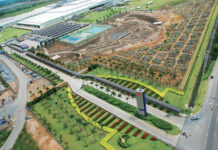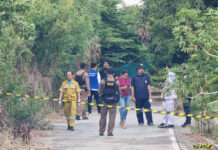Top: Residents in Ratchaburi protest reports of a plan to build a field hospital on Jan. 5, 2021.
BANGKOK — Efforts by health workers to set up field hospitals for coronavirus patients are being met with opposition from some local communities, complicating Thailand’s long term strategy to grapple with the outbreak.
Protests and objections were already raised in Ratchaburi, Samut Sakhon, and Nonthaburi, where concerned residents cite fear of infections. But experts interviewed for this story say a field hospital in a community actually makes it safer and less prone to coronavirus outbreak.
“Between having a field hospital or a market near your house, the market is much scarier,” Chatchai Mingmalairak, director of the Thammasat University Field Hospital, said by phone. “You don’t know who’s who in there, but in the hospital you definitely know for sure.”
A field hospital is a temporary hospital set up to treat patients in the wake of mass casualties or disease outbreaks. In Thailand, field hospitals are often housed in large multipurpose buildings, or in the case of the Thammasat University Field Hospital, student dorms on the Rangsit campus.
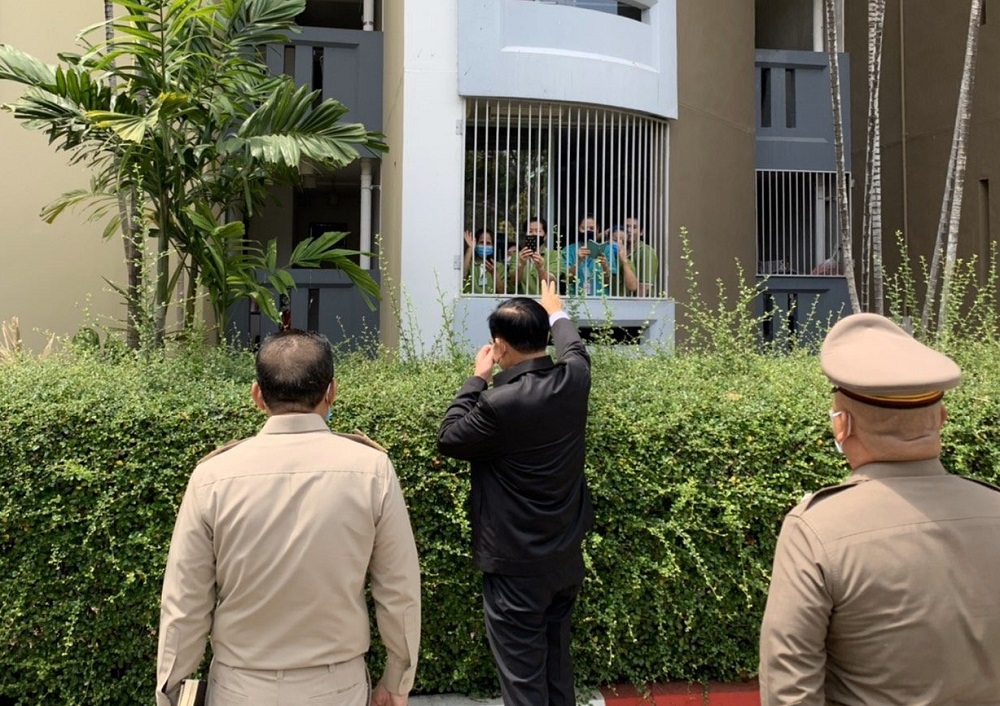
Thammasat’s field hospital initially opened during the first wave of the coronavirus pandemic in early 2020, admitting an overflow of patients who display mild symptoms. On Monday, the hospital’s 308 beds will be used again to house about 150 patients with COVID-19.
Chatchai said these field hospitals will play a vital role in preventing the public health system from being overwhelmed by coronavirus cases.
“In order to free up hospital resources for those with heavy symptoms, it’s best to send those with no symptoms to field hospitals,” he said. “That way, hospitals can keep a close watch on those with serious symptoms.”
As the number of infections continues to rise in triple digits nationwide – about 200 local transmissions were reported on Saturday – officials are racing to build field hospitals in anticipation of higher case loads.
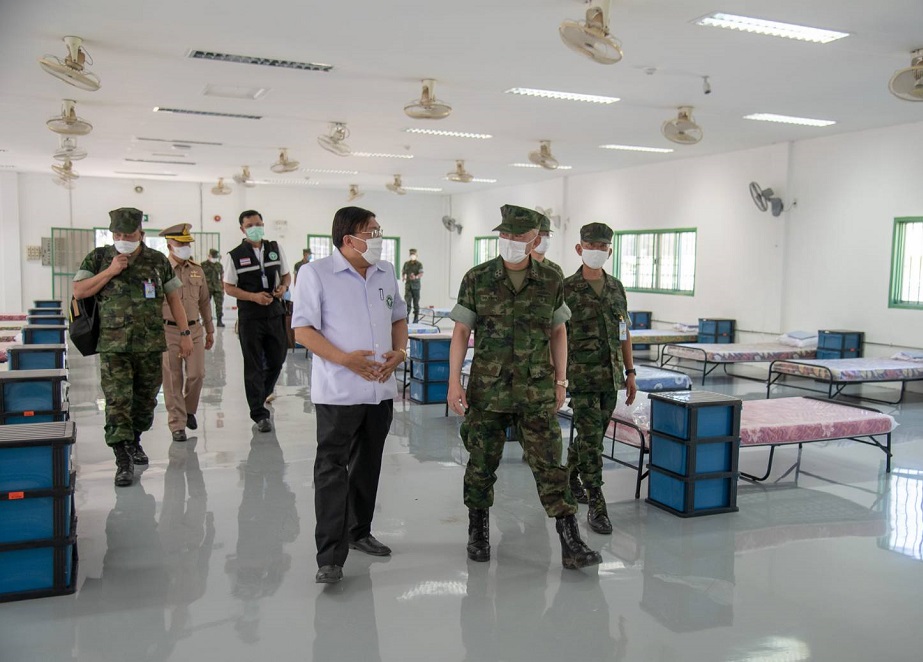
A military installation in Chonburi converted some of its facilities to host coronavirus patients. Plans for more field hospitals are underway in Sa Kaeo, Korat, Lopburi, Samut Sakhon, and several other provinces.
But the efforts already faced resistance in some places this week. On Tuesday, about 100 people in Ratchaburi city center gathered to protest reports that COVID-19 patients, which include infected migrant workers, will be brought from Samut Sakhon to a field hospital set up inside an army base in the province.
The protesters hold up signs that read, “We don’t want COVID-19 patients from Samut Sakhon,” “Ratchaburi residents do not welcome them. Put them somewhere else,” and “Put them at the Health Ministers’ house.”
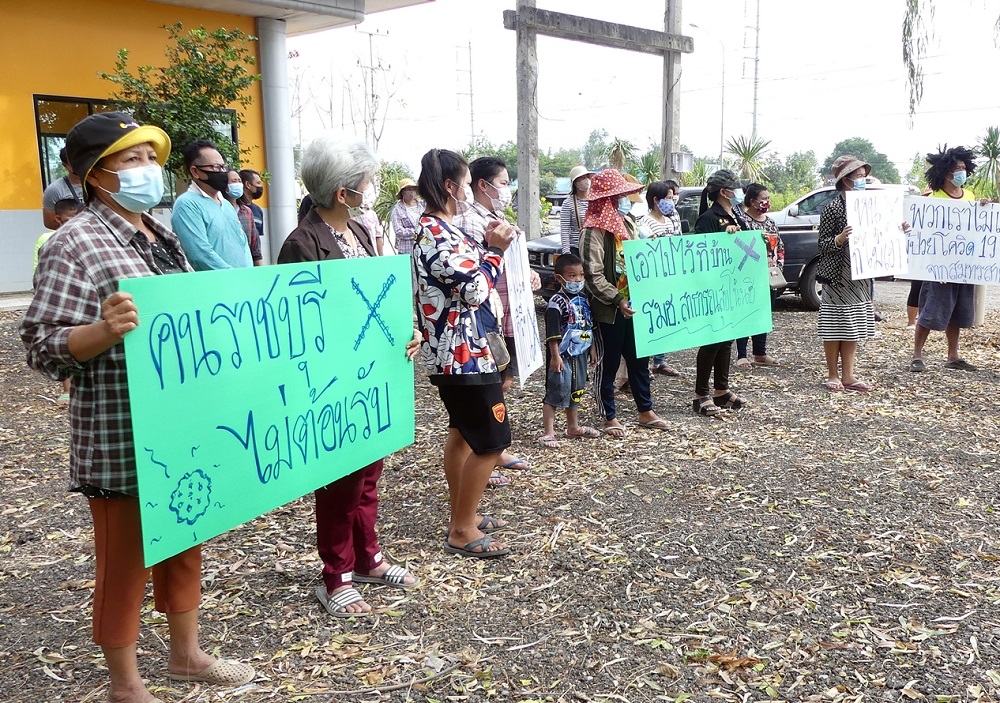
“If they were also from Ratchaburi, we would welcome them. But these people are from elsewhere and they are inconveniencing us,” Hin Kong district leader Prapan Boonpring said at the protest. “The governor is our father; does he want his children to be in hot water?”
Demonstrators also threatened to besiege Camp Panurangsri to prevent any transportation of coronavirus patients. Police and military representatives were eventually dispatched to defuse tensions.
The Governor later told them there is no plan to bring in coronavirus patients into the province, prompting the crowd to disperse.
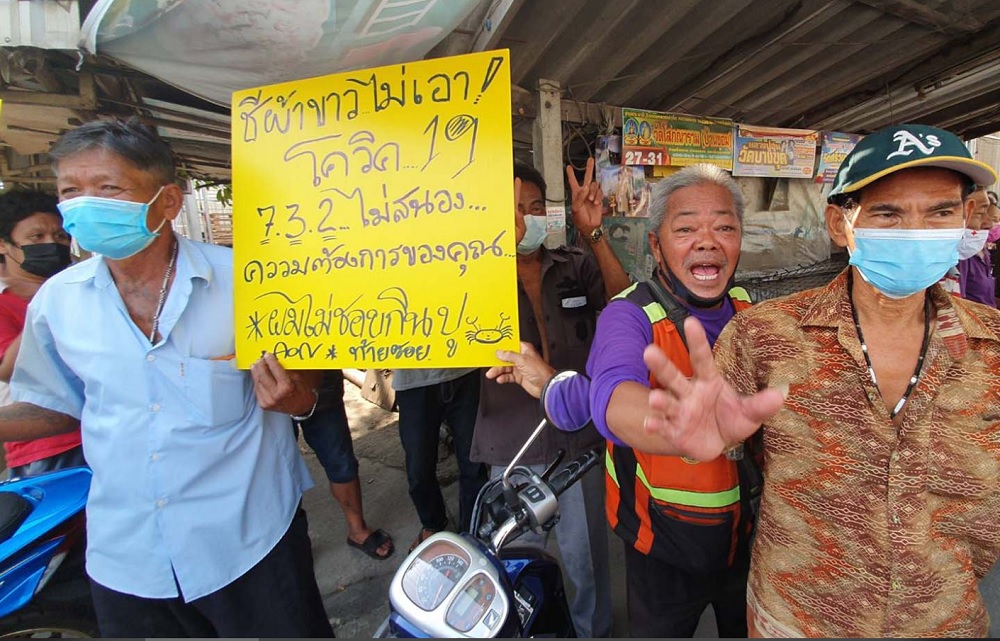
A day later, on Wednesday, around 70 people in Samut Sakhon also protested a plan to set up a field hospital at a local cement factory. At a town hall meeting in Nonthaburi on Thursday, community leaders from Bang Sai raised an objection to having a field hospital in their subdistrict, saying that residents were afraid of infections.
“Why don’t they use the area where the [infections] took place?” Bang Sai tambon leader Sam-ang Thongpayong said at the meeting. “Why do they have to spread out the infected people into other areas? Locals in the area don’t consent to it.”
Why It’s Good for Everyone
Medical professionals said some residents appear to be mistaken that the proximity to a field hospital equals to bringing infections closer to their community.
In fact, temporary hospitals exist so that infected people can be quickly isolated rather than being let loose to spread infections to the public.
“People are panicked and scared that having a field hospital means the whole area will be infected,” Thammasat field hospital director Chatchai said. “But it’s actually safer to have a controlled area for asymptomatic COVID-10 patients to recover.”
Jakravoot Maneerit, director of Vajira Hospital, where a number of coronavirus patients are receiving treatment, said another benefit of field hospitals was the system of safely handing out food and water to patients, and disposing of waste in a sanitary way.
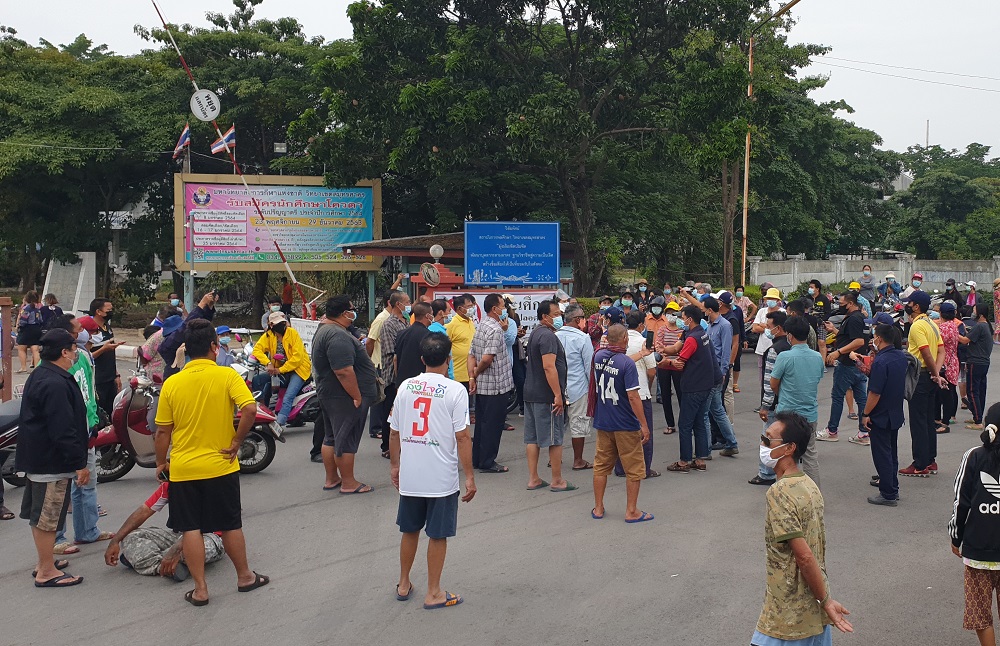
“If infected people are sent home to take care of themselves, then their neighbors or delivery people are endangered,” Jakravoot said. “But in a field hospital, everyone’s sanitary needs and food deliveries can be taken care of collectively.”
Even in areas where there are no reported local transmissions, it’s still helpful to have a field hospital nearby, the director said.
“With a pandemic like this, it won’t be over in a month or two. It’s actually very hard to know who is infected or now. Since this wave has more asymptomatic people, in the future the local people may need to use the service of the field hospital anyway.”
While some may oppose field hospitals on the grounds that asymptomatic patients should stay in their own home and isolate themselves, Chatchai from Thammasat University said no country ever succeeded in pursuing that strategy, which only resulted to surges of infections in the U.S., U.K., and Japan.
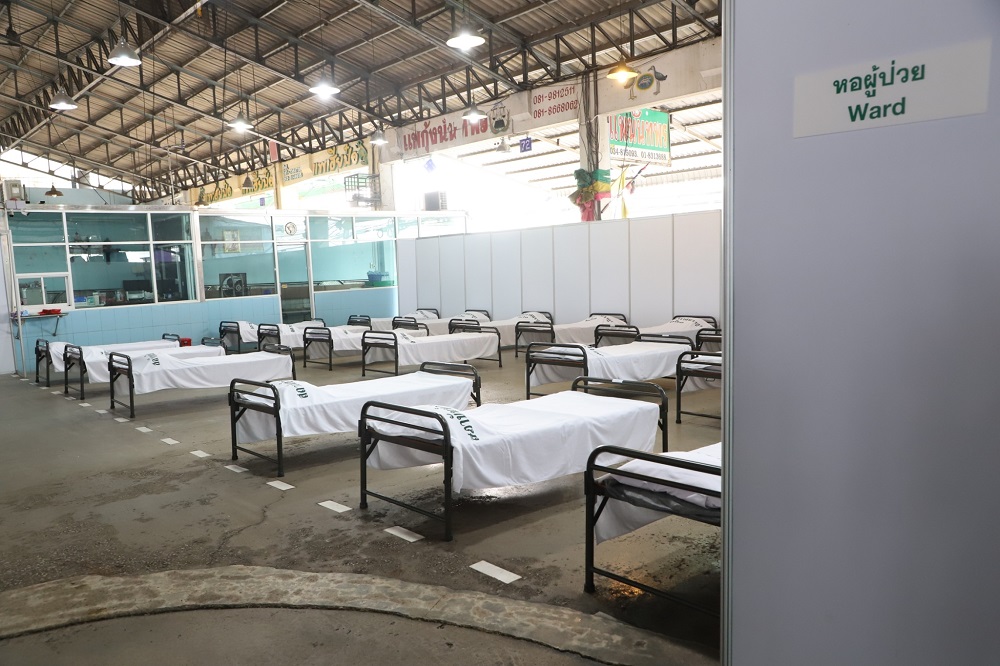
“Having a field hospital means having a clear system where people can go. It means you know for sure who’s infected and who’s not. Having a place for infected people to go in the community makes it safer,” the Thammasat doctor said.
“With this disease, it’s scarier when you don’t know if you have it.”
Jakravoot from Vajira Hospital said if infections continue to rise, there will be more field hospitals set up here in the capital. One such facility is already deployed in Bang Khun Thian district, which borders Samut Sakhon province.
Other possible sites for field hospitals are sports stadiums and other large indoor spaces overseen by the Bangkok Metropolitan Administration, he said.

